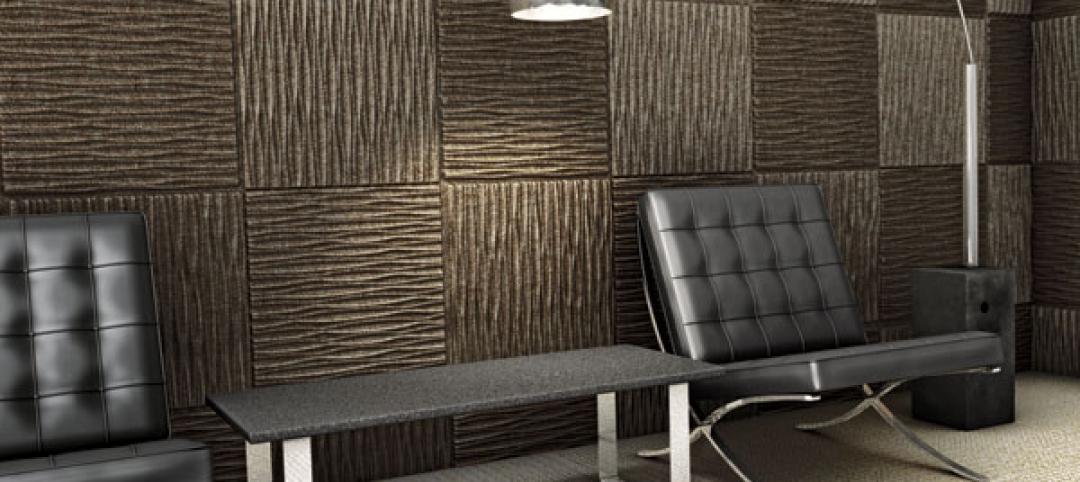
The Robert F. Kennedy Main Justice Building houses the U.S. Attorney General's office, the Justice Department headquarters, and the largest historic art collection of any GSA-built facility, so its renovation had to be performed with the utmost care.
 |
| The building’s art collection required the services of a full-time art conservator and a special “art protection package” for subcontractor bidding. PHOTO: BORIS FELDBLYUM PHOTOGRAPHY |
Offices housing hundreds of lawyers and staff had to remain operational during the construction of a brand new $3.1 million conference center and data room, the restoration of the main library and executive suites, and the installation of a new M/E/P system. All this had to be done while maintaining the highest levels of security and dealing with hazardous materials.
BD+C Reconstruction Awards judge Walker C. Johnson, FAIA, Johnson Lasky Architects, Chicago, assessed the restoration job as “a very difficult project, well executed.”
To best preserve the building's extensive art collection, protective shields were placed around the murals, sculptures, and plaster reliefs. Temperature, humidity, and dust controls were also installed, making the collection much better equipped to stand the test of time.
Due to the highly sensitive nature of the facility itself, extra security measures were employed throughout the project. Construction personnel were classified into three tiers and were permitted access to specific building areas based on these three levels of security clearance.
An extensive asbestos abatement effort was conducted, along with the removal of lead paint and careful handling of mercury vapor lamps containing PCBs. The construction manager, Gilbane Building Company, established a stop-work rule that brought construction to a halt the moment any hazardous material was uncovered.
Conservation efforts throughout the construction process ultimately returned close to $1 million to the GSA's purse.
For instance, instead of completely demolishing the existing courtyard plaza and garage structures, the design consultants determined that it was possible to renovate these features, thereby utilizing 95% of existing building materials. The courtyard's cobblestone blocks were removed, cleaned, refurbished, and reinstalled. The foundation of the courtyard's original fountain was preserved, while its pipes and pumps were replaced. And only the concrete with questionable integrity around the facility's garage beams was removed and repaired, rather than replacing all the concrete.
As for the facility's plaza deck, the Building Team tested the concrete structure's integrity to determine which sections could be repaired instead of being entirely rebuilt. Consequently, 14,520 tons of waste material were diverted from landfill.
The original foundation and structure of the building's entrance was preserved, saving another 110 tons of waste materials and decreasing the risk of penetrating a sensitive waterproofing membrane system.
Gilbane scored additional savings by utilizing a mechanism called early buyout. Taking advantage of the purchasing power of the entire four-phase construction job, Gilbane was able to secure prices early on in the project that otherwise would have been spent covering the escalating costs of building materials.
In sum, the project came in $4.2 million under budget, enabling the GSA to pursue additional work, including restoration and re-pointing of the limestone exterior, roof repair and replacement, ornate painting and plaster restoration, additional hazardous materials abatement, and fire code upgrades.
Related Stories
| Nov 25, 2013
Building Teams need to help owners avoid 'operational stray'
"Operational stray" occurs when a building’s MEP systems don’t work the way they should. Even the most well-designed and constructed building can stray from perfection—and that can cost the owner a ton in unnecessary utility costs. But help is on the way.
| Nov 19, 2013
Top 10 green building products for 2014
Assa Abloy's power-over-ethernet access-control locks and Schüco's retrofit façade system are among the products to make BuildingGreen Inc.'s annual Top-10 Green Building Products list.
| Nov 15, 2013
Greenbuild 2013 Report - BD+C Exclusive
The BD+C editorial team brings you this special report on the latest green building trends across nine key market sectors.
| Nov 15, 2013
Metal makes its mark on interior spaces
Beyond its long-standing role as a preferred material for a building’s structure and roof, metal is making its mark on interior spaces as well.
| Nov 13, 2013
Government work keeps green AEC firms busy
With the economy picking up, many stalled government contracts are reaching completion and earning their green credentials.
| Nov 13, 2013
Installed capacity of geothermal heat pumps to grow by 150% by 2020, says study
The worldwide installed capacity of GHP systems will reach 127.4 gigawatts-thermal over the next seven years, growth of nearly 150%, according to a recent report from Navigant Research.
| Oct 30, 2013
11 hot BIM/VDC topics for 2013
If you like to geek out on building information modeling and virtual design and construction, you should enjoy this overview of the top BIM/VDC topics.
| Oct 28, 2013
Urban growth doesn’t have to destroy nature—it can work with it
Our collective desire to live in cities has never been stronger. According to the World Health Organization, 60% of the world’s population will live in a city by 2030. As urban populations swell, what people demand from their cities is evolving.
| Oct 18, 2013
Researchers discover tension-fusing properties of metal
When a group of MIT researchers recently discovered that stress can cause metal alloy to fuse rather than break apart, they assumed it must be a mistake. It wasn't. The surprising finding could lead to self-healing materials that repair early damage before it has a chance to spread.
| Oct 15, 2013
High-rise Art Deco courthouse gets a makeover in Amarillo, Texas
Recognized as one of the most significant Art Deco courthouses in Texas, the Potter County Courthouse is modernized and restored to its 1930s aesthetic.
















